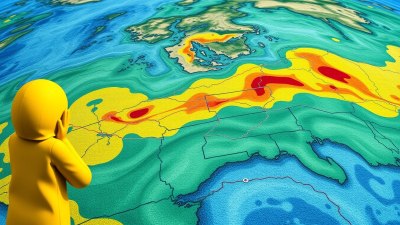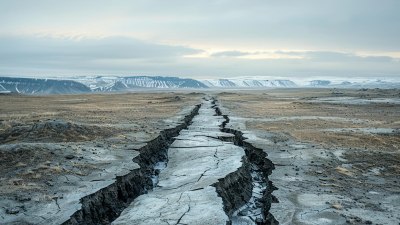Is Climate Change Making Storms Stronger: The Hidden Forces Behind Extreme Weather
Explore the relationship between climate change and the intensification of storms, uncovering hidden forces influencing extreme weather.

This image was created with the assistance of Freepik
As we navigate through the 21st century, the realities of climate change are becoming increasingly undeniable. The rising temperatures, shifting weather patterns, and escalating frequency of extreme weather events have become focal points of discussion among scientists, policymakers, and the general public alike. One of the major concerns is the relationship between climate change and the strength of storms. This article delves into the hidden forces behind extreme weather, examining whether climate change is making storms stronger and what this means for our planet.
The Science of Storm Formation
To understand how climate change might influence storms, we first need to know how storms form. Storms are created from a combination of atmospheric conditions: warm, moist air rises to create low pressure systems; as the air rises, it cools, condenses, and releases energy in the form of precipitation. This cycle generates wind, clouds, and extreme weather conditions. Factors such as temperature, humidity, wind speed, and geographical location all play critical roles in storm development.
Climate Change and Atmospheric Conditions
Climate change has modified the fundamental atmospheric conditions necessary for storm formation. As global temperatures rise, the atmosphere can hold more moisture; the increase in moisture leads to heavier rainfall events. According to the Intergovernmental Panel on Climate Change (IPCC), for every degree Celsius that the atmosphere warms, the potential for moisture increases by about 7%. Consequently, this increase in humidity can lead to more intense storms and a greater potential for flooding.
The Role of Ocean Temperatures
Another critical factor in the storm-strengthening equation is the temperature of ocean waters. Warmer oceans provide a large source of heat and energy for storms, especially tropical cyclones or hurricanes. The record high sea surface temperatures observed in recent years have been linked with more powerful storms. Higher temperatures can intensify hurricanes within just a few hours. This increased intensity poses a significant threat to coastal communities, as stronger storms can lead to more destructive winds, elevated storm surges, and extreme rainfall.
Changing Weather Patterns
Climate change is altering weather patterns globally, leading to unprecedented shifts in storm behavior. Changes in atmospheric circulation, often attributed to the melting polar ice caps and shifting jet streams, can result in longer storm seasons and an increased frequency of extreme storm events. This alteration can create conditions ripe for major storms across regions that may not typically experience them.
The Influence of Human Activity
Human activity plays a pivotal role in accelerating climate change. The burning of fossil fuels, deforestation, and industrial processes contribute to greenhouse gas emissions, leading to a warming planet. These activities not only elevate temperatures but also disrupt natural systems that normally mitigate storm development and intensity. For instance, the loss of wetlands and forests, which traditionally buffer storm impacts, diminishes the environment's ability to cope with severe weather.
Case Studies of Extreme Storms
Analyzing recent extreme storms offers compelling evidence of the link between climate change and storm strength. For example, Hurricane Harvey in 2017 demonstrated how warmer air and ocean temperatures combined to produce unprecedented rainfall, resulting in catastrophic flooding in Houston, Texas. Similarly, Hurricane Florence in 2018 delivered record-breaking rains and damaging winds across the Carolinas, exacerbated by warmer ocean waters. These examples underline the alarming trend of increasingly potent storms fueled by climate change.
Future Projections
Looking ahead, projections indicate that the trend of stronger storms will continue as climate change progresses. The IPCC reports that with continued greenhouse gas emissions, we can expect more frequent and intense storms across the globe. Regions already susceptible to severe weather will likely experience elevated risks, while areas previously untouched may face unexpected challenges. This highlights an urgent need for robust climate action and preparedness planning.
Mitigating the Impact of Extreme Weather
As the science becomes clearer, so too does the need for comprehensive strategies to mitigate the impacts of climate change and extreme weather. Investments in infrastructure improvements, such as stormwater management systems, resilient buildings, and coastal defenses, can help communities face the reality of stronger storms. Furthermore, prioritizing renewable energy and sustainable practices can help in reducing greenhouse gas emissions, thereby addressing the root cause of climate change.
The Importance of Community Awareness
Community engagement and awareness are critical in addressing the challenges brought about by climate change and intensified storms. People must understand the risks associated with extreme weather and take preventative measures to safeguard their homes, families, and local environments. Educational programs, emergency preparedness initiatives, and local policy advocacy can enhance community resilience in the face of potential disasters.
The Role of Technology and Innovation
In an increasingly data-driven world, technology and innovation offer valuable tools in understanding and responding to climate change-related storms. Advanced weather forecasting, satellite imagery, and climate modeling provide forecasters with the ability to predict severe weather events more accurately and in advance. This information is crucial for timely evacuations, resource allocation, and disaster response efforts. As technology continues to evolve, its integration into climate resilience strategies becomes even more critical.
The converging forces of climate change and extreme weather are reshaping our understanding of storms, revealing a complex relationship that has significant implications for our future. While the evidence indicates that climate change is indeed making storms stronger, the potential for adaptation and resilience exists. Through collaborative efforts to mitigate climate change and prepare for extreme weather, it is possible to safeguard communities and ecosystems against the destructive effects of increasingly powerful storms. The work is urgent; our planet's health and the safety of future generations depend on our actions today.











